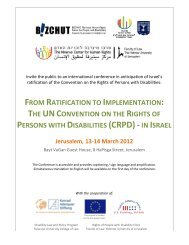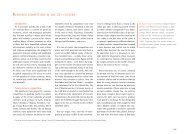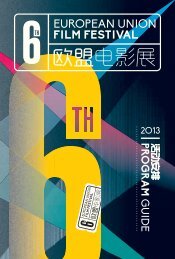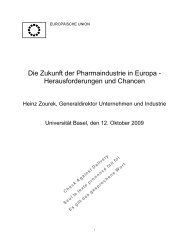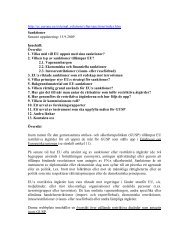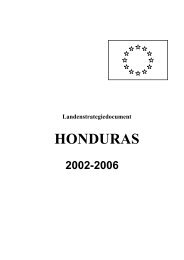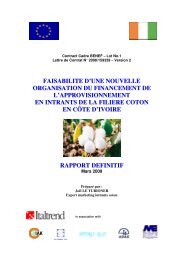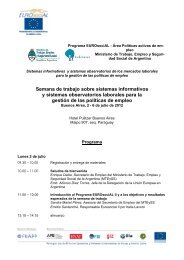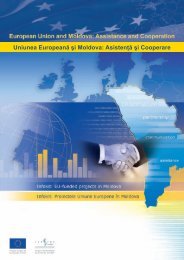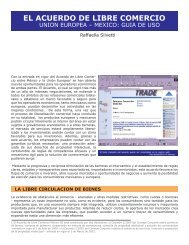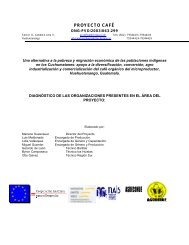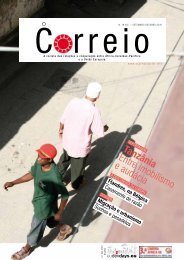Regional Reports - the European External Action Service
Regional Reports - the European External Action Service
Regional Reports - the European External Action Service
You also want an ePaper? Increase the reach of your titles
YUMPU automatically turns print PDFs into web optimized ePapers that Google loves.
3. Harari <strong>Regional</strong> Report<br />
1. General remarks on NSA at territorial level.<br />
Background about Harari<br />
Harari is a small region by traditional relatively isolated from <strong>the</strong> major national dynamics and<br />
<strong>the</strong>refore having a peculiar social organisation and model of social relationship.<br />
The native population of Harari People National <strong>Regional</strong> State is estimated at 196,000,<br />
consisting of 100,000 men and 96,000 women. 74,000 or 37.8% of <strong>the</strong> population are estimated<br />
to be rural inhabitants, while 122,000 or 62.2% are urban. With an estimated area of 311.25<br />
square kilometres, this region has an estimated density of 629.72 people per square kilometre.<br />
These estimates are based on <strong>the</strong> 1994 census, in which <strong>the</strong> region's population was reported to be<br />
131,139 and a male to female ratio of about 1:1. At <strong>the</strong> time of <strong>the</strong> census, 76,378 lived in urban<br />
areas, while 54,761 lived in rural ones; it is <strong>the</strong> only region where <strong>the</strong> majority of its population<br />
lives in urban area. However, a consistent decline in rainfall and water precipitation in <strong>the</strong> last<br />
three decades and <strong>the</strong> series of attendant droughts; internal and external social conflicts; and<br />
virulent mismanagement of human and natural resources instigated an unending series of rural<br />
migrations and urban congestions.<br />
Ethnic groups in <strong>the</strong> region include <strong>the</strong> Oromo (52.3%), Amhara (32.6%), Harari (7.1%), and<br />
Gurage (3.2%). The Harari language is <strong>the</strong> official language of <strong>the</strong> State.<br />
The religious composition of <strong>the</strong> population of <strong>the</strong> region indicated that 60.3% were Muslims,<br />
38.2% were Orthodox Christian, 0.9% Protestant, 0.55 Catholic, and 0.1% followers of o<strong>the</strong>r<br />
religions.<br />
It is estimated in 2005 that farmers in Harari had a total 31,730 head of cattle (representing less<br />
than 0.1% of Ethiopia's total cattle), 3,440 sheep (less than 0.1%), 26,910 goats (0.21%), 6,320<br />
asses (0.25%), 31,430 poultry of all species (0.1%), and 670 beehives (less than 0.1%).<br />
The regional capital town, Harar is a fortified town. The walls surrounding this sacred Muslim<br />
city were built between <strong>the</strong> 13th and 16th centuries. Harar Jugol, said to be <strong>the</strong> fourth holiest city<br />
of Islam, numbers 82 mosques, three of which date from <strong>the</strong> 10th century, and 102 shrines.<br />
a. NSA in Harari - from <strong>the</strong> previous mapping<br />
The previous mapping study highlights <strong>the</strong> fact that in Harari NSA are very few and also ra<strong>the</strong>r<br />
weak. The study ascribed a considerable potential to <strong>the</strong> Harar Relief and Development<br />
Association (HARDA) which has been found no more active and was pended by local<br />
government.<br />
Also <strong>the</strong> 2004 Mapping study underlines <strong>the</strong> scarce presence of organisations working on Human<br />
rights, in <strong>the</strong> Private Sector and in <strong>the</strong> Professional Associations, excluding <strong>the</strong> regional chapter<br />
of EWLA, which cannot be considered a Professional Association.<br />
Major highlights of current findings<br />
28




